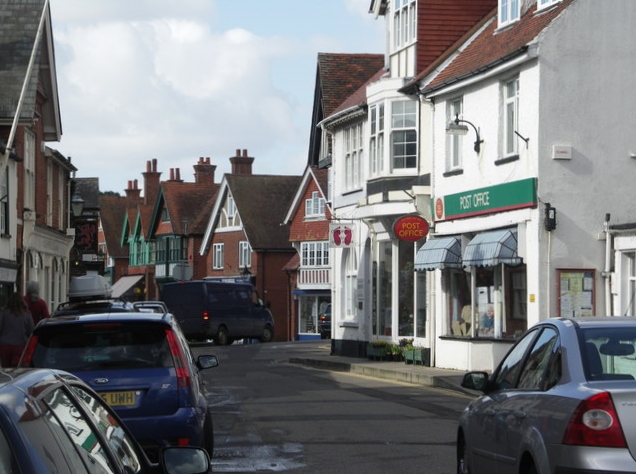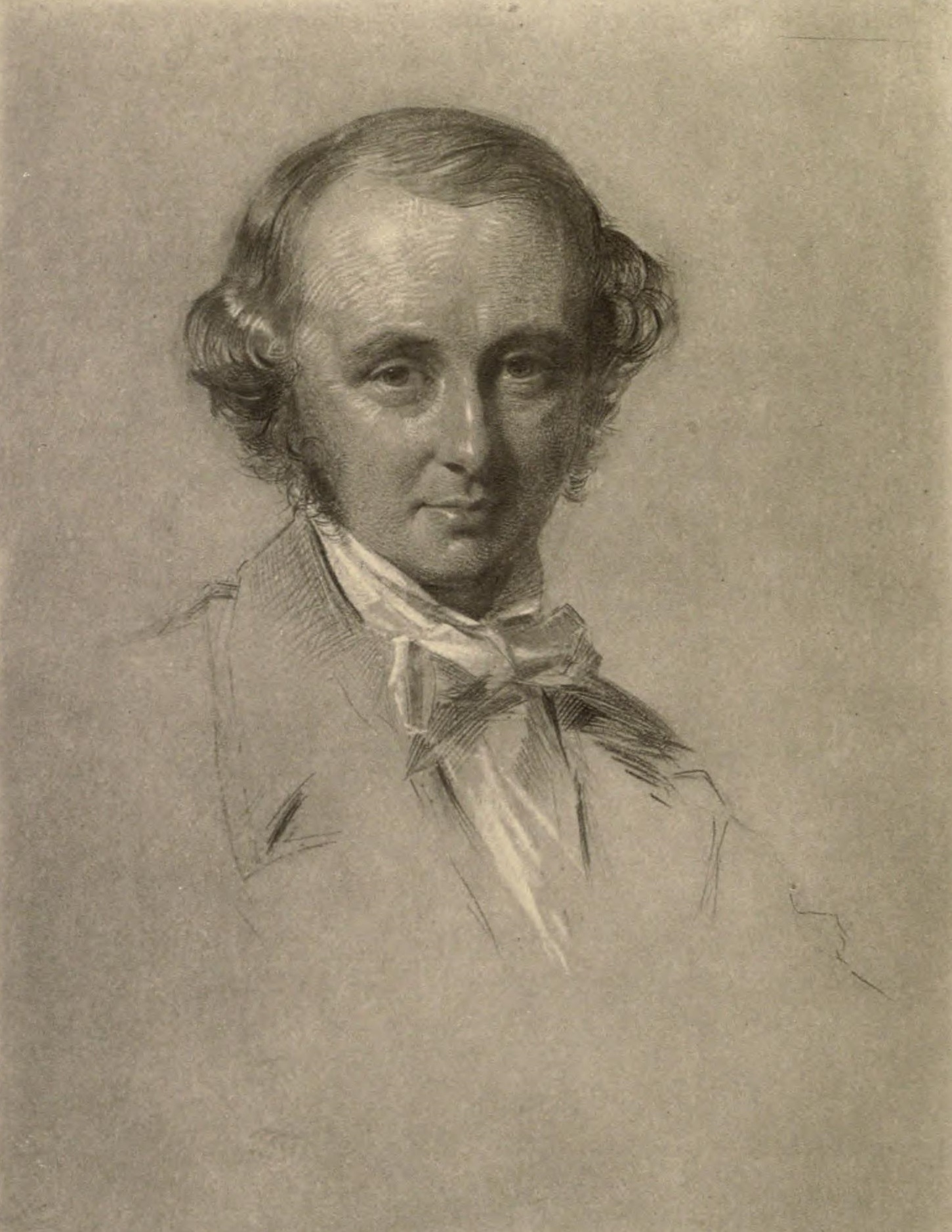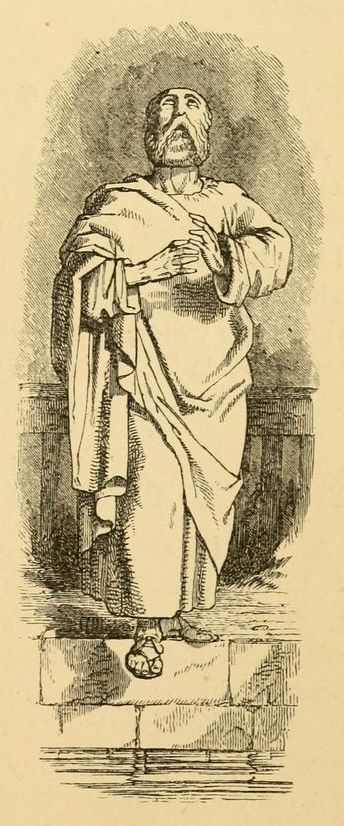|
Lewis Campbell (classicist)
Lewis Campbell (; 3 September 1830 – 25 October 1908) was a Scottish writer and classical scholar. He was best known for his works on Sophocles and Plato. His edition of Plato's Republic (Plato), Republic was well received and is still widely read today. He is also well known for his biography of the physicist James Clerk Maxwell. Biography Campbell was born in Edinburgh. His father, Robert Campbell, Royal Navy, RN, was a first cousin of Thomas Campbell (poet), Thomas Campbell, the poet. His mother was the author Eliza Constantia Campbell. His father died when he was two years of age. In 1844 his mother married Col. Hugh Morrieson. Campbell was educated at Edinburgh Academy, the University of Glasgow, Trinity College, Oxford and Balliol College, Oxford. He was fellow and tutor of The Queen's College, Oxford, Queen's College, Oxford (1855–1858), vicar of Milford on Sea, Milford, Hampshire (1858–1863), and professor of Greek language, Greek at the University of St Andrews ( ... [...More Info...] [...Related Items...] OR: [Wikipedia] [Google] [Baidu] |
George Charles Beresford
George Charles Beresford (10 July 1864 – 21 February 1938) was a British studio photographer, originally from Drumlease, Dromahair, County Leitrim. Early life A member of the Beresford family headed by the Marquess of Waterford and the third of five children, he was the son of Major Henry Marcus Beresford and Julia Ellen Maunsell. His paternal grandfather was the Most Reverend Marcus Beresford (clergyman), Marcus Beresford, Archbishop of Armagh, youngest son of the Right Reverend George Beresford (clergyman), George Beresford, Bishop of Kilmore, second son of John Beresford (statesman), John Beresford, second son of Marcus Beresford, 1st Earl of Tyrone. Beresford was sent to Westward Ho! in 1877 and attended the United Services College. Rudyard Kipling's character M'Turk in his collection of school stories set at the College, Stalky & Co., was based on Beresford, whose autobiography ''Schooldays with Kipling'' appeared in 1936. On leaving in 1882 he enrolled at the Royal In ... [...More Info...] [...Related Items...] OR: [Wikipedia] [Google] [Baidu] |
Milford On Sea
Milford on Sea, often hyphenated, is a large coastal village and civil parish in the New Forest district, on the Hampshire coast, England. The parish had a population of 4,660 at the 2011 census and is centred about south of Lymington. Tourism and businesses for quite prosperous retirees as well as the care sector make up large parts of its economy. Businesses include restaurants, cafés, tea rooms, small shops, garden centres, pubs and camping/lodge/caravan parks, bed-and-breakfasts and a few luxury hotels. Shops cluster on its small high street, which fronts a village green. The western cliffs are accessed by flights of steps. In common with the flatter coast by the more commercial and eastern part of Milford, they have car parks with some facilities, which, along with many apartment blocks and houses, have close views of The Needles, which are the main, large chalk rocks immediately next to the Isle of Wight. Its western coast is a large bank of shingle below green cliffs ... [...More Info...] [...Related Items...] OR: [Wikipedia] [Google] [Baidu] |
Charles H
Charles is a masculine given name predominantly found in English and French speaking countries. It is from the French form ''Charles'' of the Proto-Germanic name (in runic alphabet) or ''*karilaz'' (in Latin alphabet), whose meaning was "free man". The Old English descendant of this word was '' Ċearl'' or ''Ċeorl'', as the name of King Cearl of Mercia, that disappeared after the Norman conquest of England. The name was notably borne by Charlemagne (Charles the Great), and was at the time Latinized as ''Karolus'' (as in ''Vita Karoli Magni''), later also as '' Carolus''. Etymology The name's etymology is a Common Germanic noun ''*karilaz'' meaning "free man", which survives in English as churl (James (wikt:Appendix:Proto-Indo-European/ǵerh₂-">ĝer-, where the ĝ is a palatal consonant, meaning "to rub; to be old; grain." An old man has been worn away and is now grey with age. In some Slavic languages, the name ''Drago (given name), Drago'' (and variants: ''Drago ... [...More Info...] [...Related Items...] OR: [Wikipedia] [Google] [Baidu] |
Aeschylus
Aeschylus (, ; ; /524 – /455 BC) was an ancient Greece, ancient Greek Greek tragedy, tragedian often described as the father of tragedy. Academic knowledge of the genre begins with his work, and understanding of earlier Greek tragedy is largely based on inferences made from reading his surviving plays. According to Aristotle, he expanded the number of characters in the theatre and allowed conflict among them. Formerly, characters interacted only with the Greek chorus, chorus.The remnant of a commemorative inscription, dated to the 3rd century BC, lists four, possibly eight, dramatic poets (probably including Choerilus, Phrynichus, and Pratinas) who had won Dionysia#Known winners of the City Dionysia, tragic victories at the Dionysia before Aeschylus had. Thespis was traditionally regarded the inventor of tragedy. According to another tradition, tragedy was established in Athens in the late 530s BC, but that may simply reflect an absence of records. Major innovations in dramatic ... [...More Info...] [...Related Items...] OR: [Wikipedia] [Google] [Baidu] |
William Garnett (professor)
William Garnett (30 December 1850 – 1 November 1932) was a British professor and educational adviser, specialising in physics and mechanics and taking a special interest in electric street lighting. Early years Garnett was born in Portsea, Portsmouth, England in 1850, the son of William Garnett. In January 1863 he entered the City of London School, where he was a pupil of Thomas Hall. In the May 1866 examination, he obtained the first Royal Exhibition, tenable at the Royal School of Mines and College of Chemistry, and during the winter session, he studied under Dr. Edward Frankland and Professor John Tyndall, but in the following year, resigned the Exhibition and returned to the City of London School. In April 1869, he gained the Exhibition for Natural Science at St John's College, Cambridge, and in July of the same year, the Beaufoy Mathematical Scholarship at the City of London School, and commenced residence at St. John's College in October. The following summer, he was firs ... [...More Info...] [...Related Items...] OR: [Wikipedia] [Google] [Baidu] |
Evelyn Abbott
Evelyn Abbott (; 10 March 1843 – 3 September 1901) was an English writer and classical scholar. He is best known for his book ''History of Greece'', which includes a sceptical viewpoint of Homer's ''Iliad'' and ''Odyssey''. He is also very well known as being the editor-in-chief of Heroes of the Nations book series, which were widely popular in England. Biography Abbott was born at Epperstone, Nottinghamshire. He was educated at Balliol College, Oxford, where he excelled both academically and in sports, winning the Gaisford Prize for Greek Verse in 1864, but after a fall in 1866 his legs became paralysed. He managed to graduate in spite of his handicap, and was elected fellow of Balliol in 1874. His best-known work is his ''History of Greece'' in three volumes (1888–1900), where he presents a sceptical view of the ''Iliad'' and the ''Odyssey''. Among his other works are ''Elements of Greek Accidence'' (1874), and translations of several German books on ancient history, l ... [...More Info...] [...Related Items...] OR: [Wikipedia] [Google] [Baidu] |
Benjamin Jowett
Benjamin Jowett (, modern variant ; 15 April 1817 – 1 October 1893) was an English writer and classical scholar. Additionally, he was an administrative reformer in the University of Oxford, theologian, Anglican cleric, and translator of Plato and Thucydides. He was master of Balliol College, Oxford. Early life and education Jowett was born in Camberwell, London, the third of nine children. His father was a furrier originally from a Yorkshire family that, for three generations, had been supporters of the Evangelical movement in the Church of England, and an author of a metrical translation of the Old Testament Psalms. His mother, Isabella Langhorne (1790–1869), was related to John Langhorne, the poet and translator of Plutarch. At the age of 12, Jowett was placed on the foundation of St Paul's School (then located in St Paul's Churchyard) where he soon gained a reputation as a precocious classical scholar. At the age of 18, Jowett was awarded an open scholarship to Ball ... [...More Info...] [...Related Items...] OR: [Wikipedia] [Google] [Baidu] |
Theaetetus (dialogue)
The ''Theaetetus'' (; ''Theaítētos'', Latinisation of names, lat. ''Theaetetus'') is a philosophical work written by Plato in the early-middle 4th century BCE that investigates the definitions of knowledge, nature of knowledge, and is considered one of the founding works of epistemology. Like many of Plato's works, the ''Theaetetus'' is written in the form of a Socratic dialogue, dialogue, in this case between Socrates and the young mathematician Theaetetus (mathematician), Theaetetus and his teacher Theodorus of Cyrene. In the dialogue, Socrates and Theaetetus attempt to come up with a definition of ''episteme'', or knowledge, and discuss three definitions of knowledge: knowledge as nothing but ''perception'', knowledge as ''true judgment'', and, finally, knowledge as a ''Belief#Justified true belief, true judgment with an account.'' Each of these definitions is shown to be unsatisfactory as the dialogue ends in aporia as Socrates leaves to face a hearing for his trial for ... [...More Info...] [...Related Items...] OR: [Wikipedia] [Google] [Baidu] |
Diocese Of St Andrews, Dunkeld And Dunblane
The Diocese of St Andrews, Dunkeld and Dunblane is one of the seven dioceses of the Scottish Episcopal Church, part of the Anglican Communion. It is centred on St Ninian's Cathedral in Perth, and covers Fife, Perthshire, Kinross-shire, Clackmannanshire, and eastern and central Stirlingshire (western Stirlingshire is in the Diocese of Glasgow and Galloway). The current Bishop of St Andrews, Dunkeld and Dunblane is Ian Paton. The diocese continues the titles of three ancient Scottish dioceses. The Diocese of St Andrews was founded in 906 and was raised to an archdiocese in 1472. Throughout the Scottish Reformation the diocese continued under the auspices of moderate, Episcopalian reformers. From 1704 until 1726, the archbishopric was vacant, until it was recreated as the Diocese of Fife. In 1842, the diocese, no longer an archdiocese, was moved back to St Andrews and united with the Diocese of Dunkeld and Dunblane. The Diocese of Dunkeld is thought to have begun in the 9th cent ... [...More Info...] [...Related Items...] OR: [Wikipedia] [Google] [Baidu] |
St Salvator's Chapel
St Salvator's Chapel is one of two collegiate chapels belonging to the University of St Andrews, the other being St Leonard's Chapel, situated in the grounds of the adjacent St Leonard's School. The chapel, also known as St Salvator's College Church, was founded in 1450, by Bishop James Kennedy, built in the Late Gothic architectural style, and refurbished in the 1680s, 1860s and throughout the 20th century. It is currently the chapel of the United college as well as being the major university chapel. Students and members of the public regularly attend its numerous services, including twice weekly Choral Evensong and, most popularly, Sunday services. The Sunday services are followed by the famous pier walk, in which students walk to the pier and back in academic procession. Other services are held occasionally to mark graduations and other such occasions, and the chapel also hosts wedding ceremonies for many of the university's alumni. The chapel has its own choir, The S ... [...More Info...] [...Related Items...] OR: [Wikipedia] [Google] [Baidu] |
Anglican
Anglicanism, also known as Episcopalianism in some countries, is a Western Christianity, Western Christian tradition which developed from the practices, liturgy, and identity of the Church of England following the English Reformation, in the context of the Protestant Reformation in Europe. It is one of the largest branches of Christianity, with around 110 million adherents worldwide . Most are members of national or regional Ecclesiastical province#Anglican Communion, ecclesiastical provinces of the international Anglican Communion, one of the largest Christian bodies in the world, and the world's third-largest Christian communion. When united and uniting churches, united churches in the Anglican Communion and the breakaway Continuing Anglican movement were not counted, there were an estimated 97.4 million Anglicans worldwide in 2020. Adherents of Anglicanism are called ''Anglicans''; they are also called ''Episcopalians'' in some countries. The provinces within the Anglican ... [...More Info...] [...Related Items...] OR: [Wikipedia] [Google] [Baidu] |
St Leonards School
St Leonards School is a co-educational private boarding and day school for pupils aged 4–19 in St Andrews, Fife, Scotland. Founded in 1877 as St Andrews School for Girls Company, it adopted the St Leonards name upon moving to its current premises, the site formerly occupied by the University of St Andrews’ St Leonard's College, in 1883. The school emerged from the St Andrews Ladies' Educational Association which was established in 1868. One of the school's founders was Lewis Campbell, chairman of the college council for many years and a Classics professor at St Andrews University who advocated for higher education for women. Consequently, from its earliest days, the college's senior students were encouraged to prepare to matriculate and enjoyed close links with various courses offered at the University of St Andrews; in 1892, the ''Fifeshire Journal'' asked its readers: "Who is to enjoy the proud distinction of being the first matriculated girl-student of St An ... [...More Info...] [...Related Items...] OR: [Wikipedia] [Google] [Baidu] |







